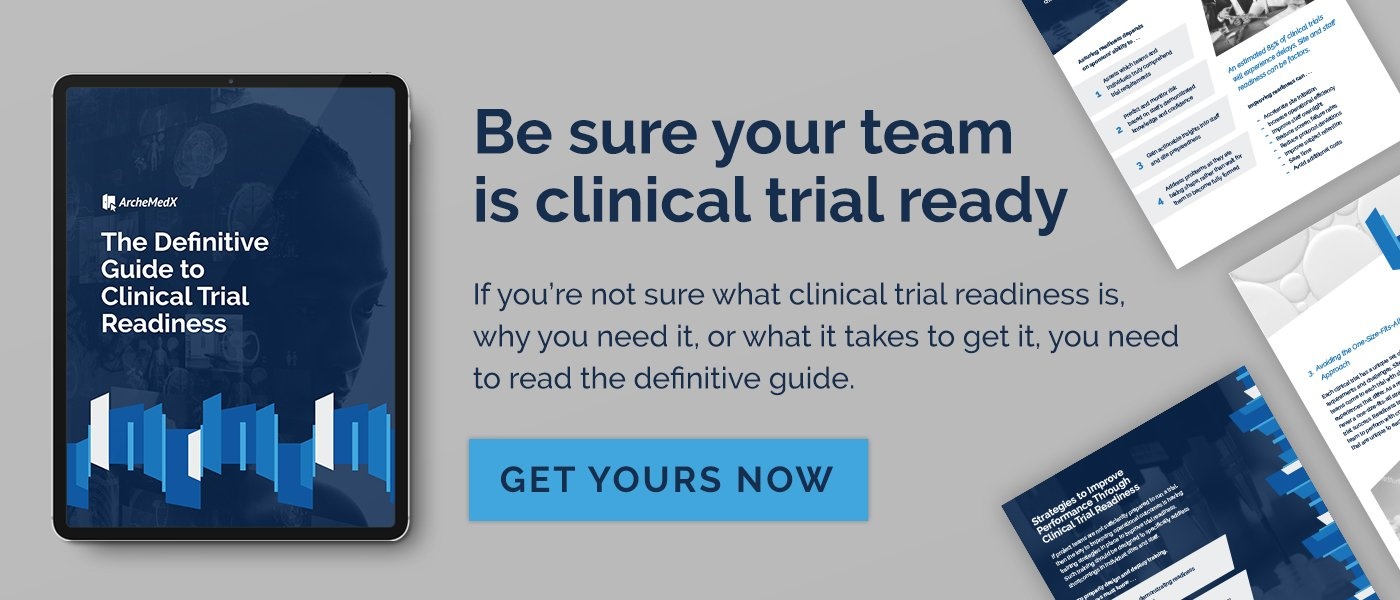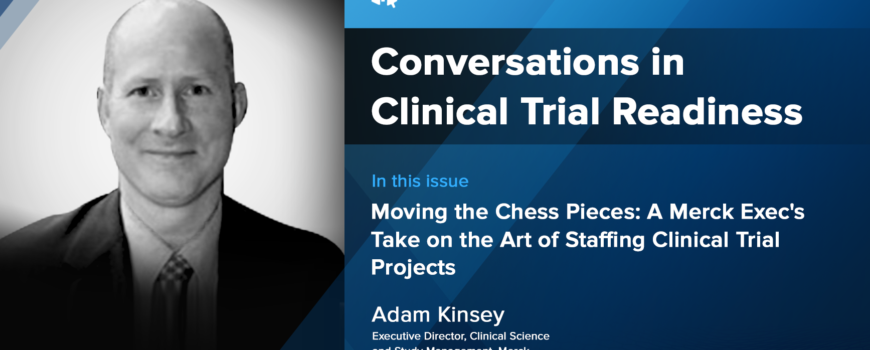[Interview] Moving the Chess Pieces: A Merck Exec’s Take on the Art of Staffing Clinical Trial Projects
We recently talked with Adam Kinsey, Executive Director, Clinical Sciences and Study Management—Oncology at Merck, about staffing clinical trial operations as part of our new interview series Conversations in Clinical Trial Readiness, by ArcheMedX.

We wanted to share this excerpt from the conversation with Adam:
ArcheMedX:
When you are working on the beginnings of a clinical trial project, how do you know how to staff up? How do you plan resources?
Adam:
In a rapidly changing environment like oncology, you could have a program shut down or a program ramp up in a very quick time frame. That’s definitely something that someone at my level is constantly looking at. Do we have enough people in the right roles of study manager versus clinical scientist? Do we have enough people to support what it looks like we’re going to have in 6-12 months? Sometimes, companies go out as far as 18 months.
That’s the big picture, but individual assignments to studies is more of an art form. Say that I’ve got a new study coming up that’s very complex and challenging, and a new therapy area to us. Am I going to assign that to a newer, greener person? Probably not. You factor in those things, balancing the work that people already are assigned to and what’s coming up in the future.
One of the things that’s always hard to manage is CRA resources to do the feasibility and site qualification piece. It’s always tough to assign people to that task, because you don’t even know which of the sites that they’re assessing you’re actually going to go forward with. You don’t make the permanent assignment of CRAs until later.
Ideally, the people who are doing the site assessing, and giving the recommendations on whether to select the site or not, are the CRAs who are going to take that site forward, train the staff, get them up and running, and work with them. That’s sometimes harder to accomplish; That’s two very different tasks. You may go to 50 sites in the U.S. to do qualification and feasibility, but you’re only going to be selecting 25. Well, I can’t assign CRAs to service all those 50 sites long-term, because I don’t know where the 25 are going to actually come from.
ArcheMedX:
You referenced evaluating fit in a complicated oncology study. The number of people involved in a clinical trial is huge. And there’s the turnover to consider. So, are you looking at fit, or preparedness to be working on the trial, during the trial? If so, how you’re monitoring that?
Adam:
There’s a set of metrics around monitoring performance. One example is protocol deviations. You might look across the sites that you have on a study and see that a patient is not supposed to be enrolled; that their liver enzymes are elevated. You see that there’re several patients who have violated the criteria. Those violations are supposed to be recorded by various people who observed them, and logged in the clinical trial management system.
Out of that clinical trial management system, you can get trending data on where protocol deviations are occurring — and begin to see outliers. You can overlay that with data like, “Are we seeing that there’s a concentration of higher levels of deviations with the list of sites that a particular CRA is site managing?” That’s from a numeric quantitative standpoint. You might also look at monitoring visit report turnaround time and action item closures. There are a variety of different metrics that you might use, all of which connect to the clinical trial management system.
There are also quality control visits, in which clinical research managers go out to sites to assess them. They take out with them a series of questions that are very quantitative, in some sense, but qualitative in other senses to check on the health of that site. You can then compare that to the signals that you’re getting from the monitoring visits.
ArcheMedX:
Let’s say there’s an investigator meeting, and you’re getting everybody involved with the trial trained up on the protocol. Is there anything that might happen during this stage that indicates that a CRA, or any individual, doesn’t have a grasp of the content matter of the protocol? Does that also get cross-checked with some of the metrics you look at?
Adam:
There is always a set of questions that you have to complete in order to get credit for that class. It’s generally not that sophisticated; it’s basically just testing that you paid attention. We have a learning management system through which people are given a curriculum for a study, and they have to take courses X, Y, and Z. That system tracks whether you did that, and did it on time.
We haven’t gotten sophisticated with really testing someone’s true grasp of the key messages, or establishing a correlation between people who really paid attention and a reduction in protocol deviations. I haven’t seen anything like that, but it would be really nice.

ArcheMedX:
Do you think an understanding of which parts of the training the individuals have grasped, and how well, could help indicate risk?
Adam:
I definitely think so. You’ve heard of concepts like quality by design and risk-based monitoring, which apply age-old risk management concepts to clinical trials. That’s focusing on reducing errors that are really going to matter to the overall purpose of your study, rather than just focusing on anything that might go wrong.
What are the risks that are really going to be critical to reduce in your program? I think that with any study, you should be making sure that the people who are working on it really know what they’re doing.
ArcheMedX:
Absolutely. One way to address that — and help support the art of resource assignments — is to employ a digital training environment, one that can analyze unique behavioral data to identify leading indicators of staff readiness and provide actionable information to managers so they can more effectively deploy their resources.
What are the risks that are really going to be critical to reduce in your program? I think that with any study, you should be making sure that the people who are working on it really know what they’re doing.
Learn how ArcheMedX enables peak clinical trial readiness by delivering personalized learning experiences that generate actionable insights.


